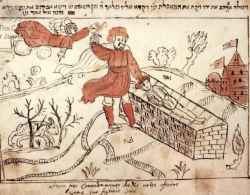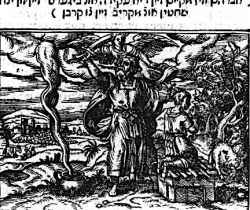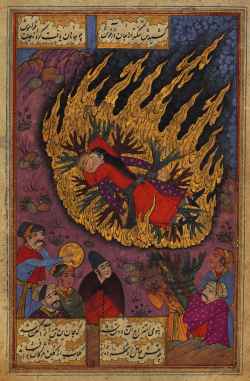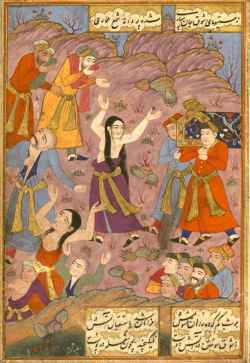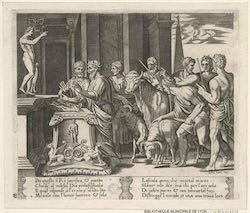Topic: 2. Sacrifice and religion: Comparisons, Antiquarians, Anthropology (16th-18th Century)
Religious sacrifices across various cultures and contexts sparked widespread interest in Early Modern Europe. As Christianity expanded into regions inhabited by "infidels" and "pagans", Europeans encountered a diverse array of sacrificial customs, ranging from the Sati rituals in India to the Aztec sacrifices in the Americas. This cross-cultural exposure captivated a wide audience, including theologians, philosophers, political thinkers, antiquarians, orientalists, missionaries, poets, artists, and even the general public. These encounters broadened the European understanding of sacrifice and led to a critical reassessment of classical and biblical sacrificial rites. This section includes:
- Sources: A selection of early modern printed materials, which include descriptions of the Americas, Asia, and Africa, alongside antiquarian and philological studies on religious sacrifice in classical antiquity and beyond. It also presents early modern works of ethnological observations and the first attempts to compare different sacrificial practices in various traditions and contexts, laying the groundwork for disciplines like the history of religions and anthropology.
- Iconographic Representations: A rich collection of images from the 16th to 18th centuries, illustrating a range of sacrificial rituals and practices as seen in different cultural and geographical contexts.
- Related Bibliography: An extensive bibliography spanning scholarly works from the 19th to 21st centuries, providing contemporary analyses and interpretations of these early studies and observations.
La Chrónica general de España que continuaba Ambrosio de Morales, natural de Córdoba, cronista del Rey Catholico nuestro señor Don Philipe segundo deste nombre, y cathedrático de Rhetorica en la Universidad de Alcalá de Henares, prossiguiendo adelante de los cinco libros, que el maestro Florian de Ocampo [...] dexo escritos [...]
Alcalá de Henares - Cordoba: Juan Iñiguez de Lequerica, 1574.
Los cinco libros postreros de la Corónica general de España (Vol. IV)
Cordoba: Gabriel Ramos Bejarano, 1586.
Niño gigante. Prodigiosa vida, singular martirio, preciosa muerte, repetidas y estupendas maravillas del Martir Grande de Capadocia, San Mamante ò Mamés
Zaragoza: Herederos de Diego Dormer, 1694.
La réfutation des accusations de crime rituel d'Andreas Osiander
in: Revue d'histoire et de philosophie religieuses, v. 97 (2017), issue 3: pp.449-467.
Via della fede mostrata a’gli ebrei da Giulio Morosini Venetiano
Rome: Stamparia della Sacra Congregazione de Propaganda Fide, 1683.
Via della fede mostrata a’gli ebrei da Giulio Morosini Venetiano. Diuisa in tre parti. Nella prima si pruoua, che non deuono osseruare la legge mosaica. Nella seconda si mostrano tutte le cerimonie. Nella terza si palesa, che nemmeno osseruano i precetti del decalogo
Rome: Stamparia della Sacra Congregazione de Propaganda Fide, 1683.
Sacrifice of Isaac ( Hebrew Illuminated Manuscripts)
from: Warsaw picture Bible, Cod. 1164, fol. 26 (from Venice)
The Emanuel Ringelblum Jewish Historical Institute in Warsaw (JHI)
The Sacrifice of Isaac (1692)
from: Ze'enah u-Re'enah
Munich, Bayerische Staatsbibliothek, A. Hebr. 106, fol. 15v
Ancient Christian Martyrdom: Diverse Practices, Theologies, and Traditions
New Haven, CT - London: Yale University Press, 2012.
Sulla ri-significazione del rituale dei sacrifici nell’esegesi mistica del XIII secolo
in: Materia Giudaica, v. 6 (2001), issue 1: pp.69-77.
Sacrificial skins: the value of Pakistan’s Eid al-Azha animal hide collection
in: Muslim World, v. 112 (2022), issue 1: pp.14-32.
Satī, from a Sūz u Gudāz manuscript. The union of the couple on the pyre (1657)
from: Sūz u Gudāz ms, Iran, Walters Manuscript W. 649, fol. 19b (Burning and Melting)
The Walters Art Museum, Baltimore, Maryland
the young Hindu woman accompanies her bridegroom's coffin to the funeral pyre and decides to commit sati (1657)
from: Walters manuscript W.649 (Burning and Melting)
The Walters Art Museum
Il carattere religioso del sacrificio
in: Miti e riti della preistoria : un secolo di studi sull'origine del senso del sacro : fonti scelte, pp. 179-191
Milano: Jaca book, 2000.
John Seldens De Diis Syris: Idolatriekritik und vergleichende Religionsgeschichte im 17. Jahrhundert
in: Archiv für Religionsgeschichte, v. 3 (2001), issue 1: pp.1-24.
Antiquarianism and Idolatry: The Historia of Religions in the Seventeenth Century
in: Historia, Empiricism and Erudition in Early Modern Europe, pp. 181-209
Cambridge, MA: The MIT Press, 2005.
Per questo il Re sacrifica e partito chiede al milesio Dio per la figliuola, il qual risponde à l'ermo e' nculto lito Menala con l'honor funereo et sola lasciala quivi, che mortal marito Haver non dee, ma che per l'aer vola Di velen pieno et con immortal foco Distrugge 'l mondo, et mai non trova loco [1530]
from: Maestro del Dado, Favola di Psiche, [Roma] Ant. Sal. exc. [1532?]
Bibliothèque municipale, Lyon
Indo-Persian Travels in the Age of Discoveries, 1400–1800
Cambridge: Cambridge University Press, 2007.

